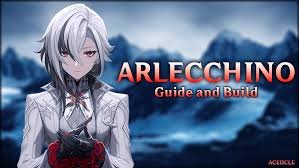
Arlecchino is a central figure in the rich tradition of Italian theater, particularly within the genre known as commedia dell’arte. With his colorful patchwork costume and playful demeanor, Arlecchino has captured the hearts of audiences for centuries. This article delves into the history, characteristics, and cultural impact of Arlecchino, exploring how this iconic character has evolved and influenced various forms of art and performance.
Table of Contents
The Origins of Arlecchino
The character of Arlecchino first emerged in Italy during the 16th century, a period marked by the rise of commedia dell’arte. This theatrical form was characterized by its improvisational nature, use of stock characters, and a focus on physical comedy. Arlecchino, initially a servant figure, quickly became popular due to his wit, agility, and cleverness.
The Development of Commedia dell’Arte
Commedia dell’arte, meaning “comedy of the profession,” is a style of theater that relies on improvisation rather than a fixed script. Actors performed using a set of established character types, each with specific traits and social roles. Arlecchino, known for his resourceful and cunning nature, became one of the most beloved characters in this genre. His antics often challenged the societal norms of his time, making him a voice for the lower classes.
The Distinctive Costume of Arlecchino
One of the most striking features of Arlecchino is his costume, which typically consists of a colorful patchwork of fabrics. This visually captivating outfit not only serves to distinguish him from other characters but also symbolizes his vibrant personality.
Symbolism Behind the Patchwork Design
The patchwork costume of Arlecchino represents his adaptability and multifaceted character. Each patch signifies a different aspect of his identity, highlighting his ability to navigate various social situations. The bright colors and patterns draw the audience’s attention, making Arlecchino an unforgettable presence on stage.
Character Traits of Arlecchino

Arlecchino is characterized by his quick wit, agility, and playful nature. Often depicted as a clever servant, he embodies the archetype of the trickster who uses his intelligence to outsmart those of higher social status.
The Humor of Arlecchino
The humor associated with Arlecchino is largely derived from his sharp intellect and comedic timing. His performances often include a mix of physical comedy, clever dialogue, and improvisation, engaging audiences with lively entertainment. Arlecchino’s ability to think on his feet makes him a dynamic character, ensuring that each performance is unique and tailored to the audience’s reactions.
The Role of Arlecchino in Commedia dell’Arte
Within the framework of commedia dell’arte, Arlecchino plays a pivotal role as a servant character. His interactions with wealthier characters often serve as a mirror to society, exposing the follies and contradictions of the elite.
Arlecchino and Social Commentary
The interactions of Arlecchino with higher-status characters provide a platform for social commentary. Through his cleverness and resourcefulness, Arlecchino is able to highlight the absurdities of social hierarchies, allowing audiences to reflect on their own societal norms. This duality—comedy intertwined with critique—defines the essence of commedia dell’arte.
The Physicality of Arlecchino
The physicality of Arlecchino is an essential aspect of his character. His movements are often exaggerated and acrobatic, contributing to the comedic effect of his performances. This physicality allows Arlecchino to engage audiences in a visually dynamic way.
Dance and Movement in Arlecchino’s Performances
Incorporating elements of dance and physical comedy, Arlecchino embodies a spirit of joy and playfulness. His lively movements captivate audiences, transforming his performances into a visual spectacle. This combination of dance and humor enhances the narrative, making Arlecchino a central figure in the world of performance art.
The Global Influence of Arlecchino
As commedia dell’arte spread beyond Italy, Arlecchino became a significant figure in various theatrical traditions across Europe and beyond. His adaptability and universal appeal have allowed him to resonate with audiences worldwide.
Arlecchino in European Theater
In France, Arlecchino was integrated into the farce genre, while in England, his influence can be seen in the development of pantomime and clowning. These adaptations showcase how Arlecchino can be reinterpreted in different cultural contexts while retaining his core essence. The character’s ability to transcend cultural boundaries speaks to his enduring legacy.
Artistic Representations of Arlecchino
The figure of Arlecchino has inspired countless artistic interpretations across various media. From paintings to literature, Arlecchino has been depicted as a symbol of creativity, joy, and the human experience.
Visual Arts and Arlecchino
Artists have long been captivated by Arlecchino‘s vibrant imagery. His colorful costume and playful demeanor lend themselves well to artistic expression, resulting in stunning visual representations that celebrate his character. These artworks not only honor Arlecchino’s theatrical roots but also explore broader themes of identity and transformation.
The Role of Arlecchino in Modern Media

In contemporary culture, Arlecchino continues to thrive, finding new life in theater, film, and television. The adaptability of Arlecchino allows him to resonate with modern audiences while retaining the qualities that have made him a classic figure in comedic performance.
Arlecchino in Film and Television
Various adaptations of Arlecchino can be found in modern film and television, where his essence is reimagined for contemporary narratives. These adaptations often explore themes of identity, class, and the absurdity of human behavior, reflecting the character’s deep-rooted connection to social commentary. The versatility of Arlecchino ensures that he remains relevant in today’s entertainment landscape.
The Continued Relevance of Arlecchino
As we explore the world of Arlecchino, it becomes clear that his character transcends time and cultural boundaries. The themes he embodies—humor, resilience, and the struggle against societal norms—remain relevant today. In a world often fraught with challenges, the spirit of Arlecchino serves as a reminder of the importance of laughter and creativity.
The Universal Appeal of Arlecchino
The universal appeal of Arlecchino lies in his ability to connect with audiences on a fundamental level. Whether through his comedic antics or his clever observations, Arlecchino resonates with the human experience, making him a timeless figure in the world of performance art.
Celebrating the Legacy of Arlecchino
In conclusion, Arlecchino stands as a vibrant testament to the enduring power of comedy and the human spirit. From his origins in commedia dell’arte to his global adaptations, Arlecchino embodies the joy of creativity and the ability to challenge societal norms through humor. As we celebrate the legacy of Arlecchino, we acknowledge his impact not only on theater but also on broader cultural narratives. His character will undoubtedly continue to inspire and entertain future generations, ensuring that the spirit of Arlecchino remains alive for years to come.
The Influence of Arlecchino on Contemporary Performances
In modern theatrical productions, Arlecchino is often used as a reference point for understanding the dynamics of humor and physicality in performance. Many contemporary actors draw inspiration from his character, utilizing similar traits to enhance their own comedic styles. The essence of Arlecchino can be seen in various forms of entertainment, highlighting the character’s lasting impact on the art of performance.
Exploring the Themes of Arlecchino
The character of Arlecchino often explores themes of love, loyalty, and deception. His relationships with other characters frequently delve into the complexities of human interactions, showcasing both the lighthearted and serious aspects of life. Through his antics, Arlecchino often uncovers deeper truths about society and human nature, making him a relatable figure across generations.
The Evolution of Arlecchino in Modern Art
As artists continue to reinterpret Arlecchino in various forms, his character remains a rich source of inspiration. Contemporary artists have embraced Arlecchino’s spirit, creating works that reflect modern societal issues while drawing on the playful, mischievous essence of this iconic figure. This ongoing evolution underscores the adaptability and relevance of Arlecchino in today’s artistic landscape.
Also read Callie Haverda A Rising Star in the Entertainment Industry
Final Thoughts on Arlecchino
Arlecchino is more than just a character; he represents the joy of improvisation, the spirit of resilience, and the enduring power of humor. His journey from the streets of Italy to stages around the world illustrates the universal appeal of laughter and creativity. As we reflect on the legacy of Arlecchino, we are reminded of the importance of comedy in our lives—a celebration of the human experience that continues to resonate with audiences across time and culture.
By embracing the character of Arlecchino, we honor the rich traditions of theater while recognizing the transformative power of performance art. This vibrant clown, with his colorful costume and witty charm, remains a symbol of joy, creativity, and the timeless nature of comedy.




